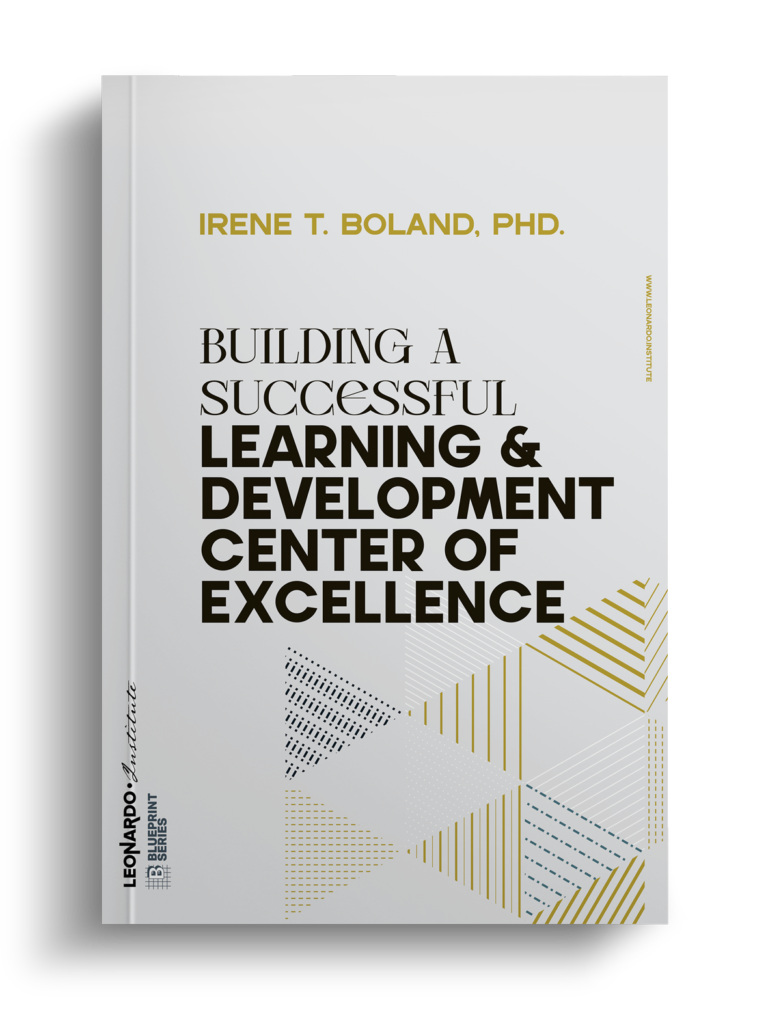Artificial intelligence (AI) is rapidly transforming how organizations develop talent. According to McKinsey, 63% of executives believe AI will significantly enhance workforce skills building by 2030. As AI capabilities expand – especially machine learning (ML), natural language processing (NLP), computer vision and predictive analytics – intelligent technologies are set to augment human workplace learning and coaching.
Potential Benefits of AI for Workplace Learning
This new wave of AI-fueled solutions brings immense potential to:
- Accelerate expertise development through automated personalized guidance
- Increase engagement via dynamically tailored experiences
- Gain data-driven insights for continuously optimizing development programs
- Expand access to learning for widely distributed workforces
The World Economic Forum predicts that by 2025, analytical and soft skills will rise sharply in demand across industries as AI handles more routine tasks. This underscores the need for large-scale reskilling and upskilling facilitated by the same technologies driving this workplace transformation.
The Power of AI Teaching Assistants & Intelligent Tutoring Systems
Intelligent tutoring systems (ITS) replicate personalized instruction powered by AI. They create customized learning paths and activities tailored to each learner by analyzing knowledge levels, skill gaps, learning pace and psychological traits. ITS platforms draw on libraries of instructional content to serve the experiences most likely to address needs of each individual.
For example, an ITS could assess a new sales representative’s baseline negotiating abilities through role playing exercises. It then prescribes micro lessons on questioning techniques observed to be weak areas. If the behaviors fail to improve within simulated customer interactions, the system adjusts by recommending videos demonstrating positive examples followed by more contextual role playing to embed skills.
Research indicates ITS yields learning gains in half the median time versus traditional methods, also improving on-the-job performance 60% better than average. This personalized guidance at scale frees up valuable coaching capacity while increasing productivity.
In online learning platform developer Anthropic’s recent customer survey, 87% of respondents said personalized education paths were very or extremely helpful. Creating hyper tailored development blueprints saves employees’ time while connecting them to the right skills with minimal search effort.
ITS also facilitates standardized upskilling across large workforces by delivering uniform baselines. For example, Australia’s Commonwealth Bank relies on AI tutor Genie to lift digital acumen and customer sentiment. To date 150,000 employees have learned via Genie with 95% reporting it positively impacted their abilities.
Transforming Frontline Workforces through Targeted Microlearning
Microlearning consists of short 3-10 minute bursts of education addressing narrow topics. Humans suffer declining attention spans past 15-20 minutes. Microlearning’s bite-sized lessons cater to diminished focus in the smartphone era while facilitating repeated practice to boost retention.
For deskless frontline workers who rarely sit through long courses, microlearning also provides more accessible development in the flow of high activity jobs. Firms deploy it via mobile devices enabling application of new protocols in real operational contexts immediately after consuming the content.
Artificial intelligence takes microlearning personalization to the next level via several mechanisms:
- Predictive analytics prescribe the most relevant microlesson for each employee depending on their work context captured through sensors, location tracking and schedules.
- Digital assistants prompt workers to take microcourses at opportune times like before starting new tasks.
- Reinforcement algorithms serve follow up pieces after initial concepts are introduced to encourage mastery based on employee engagement patterns.
Immersive Learning Powered by Extended Reality
Immersive simulations fuse gaming elements, augmented reality (AR), virtual reality (VR) and lifelike 3D environments to deeply embed learning. Research demonstrates immersion heightens engagement boosting content retention 75% compared to traditional lectures. VR embeds lesson recall up to 400% better by invoking the brain’s spatial memory centers.Extended reality (XR) technologies transport employees into experiential settings where they apply skills using real world tools and scenarios before confronting the pressures of a job. Hospitals have trainees practice surgery in VR before operating on actual patients. Fidelity Investments onboards thousands of client service reps using VR simulations to achieve empathy and advisory perspectives prior to taking calls.
AI is taking XR training to new adaptive levels. Motion sensors track micro behaviors detecting stress signals or physical reactions suggestive of poor comprehension. The system instantly modifies scenarios to help cement understanding.
Real-Time AI Nudging & Assisted Instruction
While immersive learning develops foundational skills, adjusting behaviors day-to-day on the job requires continual reinforcement. Emerging assisted instruction technologies provide these real-time nudges to optimize worker activities.
On factory floors, dynamically illuminated guiding paths via projection mapping show assembly workers optimal motion paths to improve efficiency. Automated inspection solutions use computer vision for quality control freeing staff to upshift time to more value-added work.
In retail locations, sensors coupled with wearables track employee movements to reveal best practices. The system delivers positive feedback through earpieces when they demonstrate desired sequencing of tasks known to enhance customer satisfaction.
For complex equipment repairs, smart glasses overlay AR-enhanced step-by-step instructions registered in space right before technicians’ eyes as they manipulate components so hands remain free. AI recognizes parts and states in workflows to serve accurate mapping paired with speech interactions enabling technicians to query for specifics through the process.
Uncovering Powerful Learning Insights from Big Data Analytics
The volume of learning data organizations now capture offers unprecedented potential to continuously improve development initiatives. Sophisticated analysis of information flows from learning management systems (LMS), HR information systems (HRIS), skills repositories, productivity software and operational databases provides multidimensional visibility.
Predictive modeling forecasts skills likely to drive business impact allowing proactive alignment of learning investments with corporate strategy. Evaluating participation rates, completion metrics, engagement patterns, and earned certifications by various learner segments guides decisions on resource allocation. Combining learning analytics with performance outcomes also quantifies capability building ROI – critical for executive buy-in.
For example, Dell applied big data techniques to better understand skills truly driving higher sales. By factoring reps’ participation in certain advanced courses against closure rates and productivity benchmarks grouped by specialty area, they determined where to focus sales enablement resources for optimal outcomes. This allowed reallocation of L&D spending from $200 million wasted on ineffective training to offerings demonstrated to directly lift performance.
Just-In-Time Support via AI-Powered Chat Agents
Conversational agents empower employees with on demand learning. Chatbots handle repetitive information requests to ease overload on help desks. Their 24/7 availability across devices allows quick access to answers from wherever employees operate. Chatbots document these support interactions building knowledge bases reducing future escalations. As queries get more complex, AI agents escalate to live experts when appropriate.
Juniper Networks relies on AI service agent Leo to enhance IT support and upskill global employees. Leo provides guided troubleshooting, shares training videos, and redirects users to proper human contacts as needed. Employee surveys show 60% already view Leo as an equivalent peer on the team. And Leo resolved 22% of all IT cases alone just 6 months after launch.
Cultivating Enterprise Knowledge Sharing Practices
Collaborative team problem solving and internal expertise exchange foster continuous learning. But connecting with peer experts across knowledge siloes often proves challenging in expansive organizations. AI recommendation engines analyze project histories, skills profiles, content usage and communications to intelligently matchmake colleagues for informal learning.
Matching algorithms also suggest online communities addressing current project needs where employees can tap into collective wisdom. As users contribute their own insights back to these networks, they further strengthen organic knowledge flows for future beneficiaries.
The Future of Blended AI & Human-Led Learning
While technology expands development opportunities, human connection remains integral to nurturing talent. Pure self-directed learning has limitations, especially for soft skills like leadership capability. Mentoring relationships provide emotional support and role modeling for rising leaders to internalize behaviors. Ethics and cultural values pass through human interactions at a nuanced level machines cannot yet fully replicate.
Leading organizations understand AI’s power is best harnessed in harmony with people. Learning platforms amply stocked with intelligent resources require a human touch to curate guidance personalized to each employee. Immersive simulations still demand debriefs from coaches to cement lessons extracted from experience. An extra dose of empathy bolsters progress through frustrating skill-building plateaus.
This blended model allows AI to scale personalization for broad workforces while retaining human relational components essential for nurturing growth. Organizations who embrace this collaborative approach will realize immense capability gains to thrive in the 21st century digital economy.
The latest artificial intelligence advances are profoundly expanding workplace development. Immersive learning simulations, data-driven insights, productivity-enhancing assistive tools and conversational platforms provide just a glimpse into the wide horizon of possibilities.
By integrating human ingenuity with machines’ untiring capacity to teach, guide and encourage 24/7 both centralized and distributed workforces now have support to continuously adapt.
The future offers tremendous potential to amplify expertise building and accelerate skills development for industries willing to forge a new path. What could your organization achieve if learning became more seamless, engaging and intelligence-fueled? The organizations who harness these exponential technologies will surely pull ahead of peers. So now is the time to explore this new frontier.
References:
- McKinsey. Reimaging how AI will shape the workforce and skills of the future. (Oct 2021)
- World Economic Forum. Future of Jobs Report. (Oct 2020)
- ITS Forum. The Impact of AI Tutors on Learning Effectiveness. (Aug 2019)
- Anthropic Customer Data Report. (Nov 2022)
- Genie case study. Commonwealth Bank of Australia
- Harvard Business Publishing, “Immersive learning simulations are more effective” (Dec 2019)
- LearnUpon, “VR Training Shows its Value for Employee Training” (March 2020)
- Business Insider, How Big Data is Revolutionizing Learning and Development (Dec 2018)
- Juniper.net. Leo AI Chatbot Improves IT Support. (April 2022)


